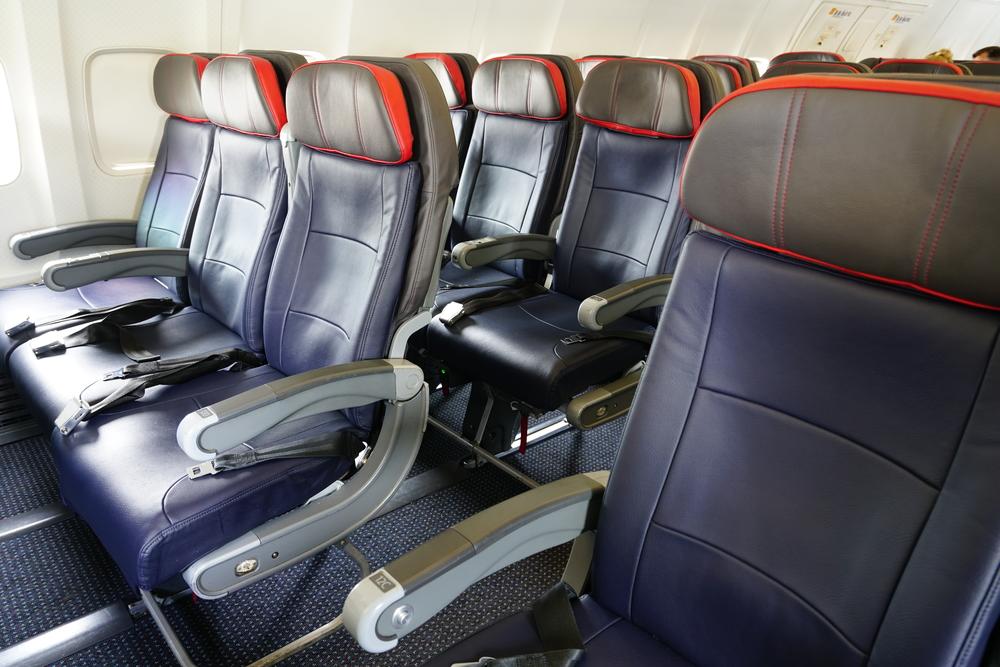Could Bigger Airplane Seats Be on the Horizon?

The FAA has been ordered to investigate the impact of being stuffed like sardines into airplanes.
Thanks to ever-shrinking seat and legroom sizes on planes, passengers are being stuffed into smaller and smaller spaces. In 2015, the passenger advocacy group Flyers Rights asked the Federal Aviation Administration to regulate seat sizes and the distance between rows, but the FAA did nothing, saying that there was no safety or security concern with the small places.
But that may change. The advocacy group took their petition to court, and now a federal appeals court has ordered the FAA to review the request. According to the court, when the FAA initially declined, it didn’t cite any studies or tests that would qualify their claim of no concerns, particularly how smaller seat sizes impact the ability of passengers to reach emergency exits.
“We applaud the court’s decision, and the path to larger seats has suddenly become a bit wider,” Kendall Creighton, a spokeswoman for Flyers Rights, told the Star Tribune.
Flyers Rights noted in their petition that since the 1970s, the distance between rows of seats has decreased from 35 inches to 31, and seat width has gone from 18 inches to 16.5. The group noted that when passengers are crammed together, it increases the risk of blood clots from lack of movement and decreases the ability to reach emergency exits.
“This is the Case of the Incredible Shrinking Airline Seat,” Judge Patricia Millett said in the three-judge panel ruling. “As many have no doubt noticed, aircraft seats and the spacing between them have been getting smaller and smaller, while American passengers have been growing in size.”
[Photo: Shutterstock]























Not so much the width of the aircraft, but the width of the seat. Having 3-4-3 works OK on a 747/A380.........but not on 777s.
FAA certification procedures include emergency evacuation tests. They run those test at the maximum allowed passenger load the manufacturer applied for in their application for certification. An airline can request a high-density configuration so long as it's within that certified capacity. That covers the flight safety side of the question. The other question I don't know the answer to is whether shorter pitch has a direct correlation to DVT and other in-flight circulatory issues.
NYC96, Wider aircraft will call for more seats per row ... As many have said, most people want the cheapest fare but not the narrowest seats; and some carriers are ready to sell standing seats !! So, yes, it's like kids' play. Administration has to say where is the limit.
I don't see this bill going anywhere. If it does get passed, I'd assume that they'd mandate a 17" width minimum with whatever they think is a reasonable amount of pitch. Why? 17" wide seats, in a 3-3 configuration has been the norm since the Boeing 707. The 707, 727, 737, and 757 all have the same fuselage width, and as such, the same cabin width, which means the seats will never be more than 17" wide. Mandating a width wider than this would simply mean that carriers would dump their Boeing narrowbody aircraft, and the US would shoot itself in the foot by regulating away their own domestic product.
I totally agree that you get what you pay for to a great extent but no one has a choice about whether UA adds an extra seat in each row to Y while shrinking seat width to 17" in their 777s. It's not like we can opt for an 18" seat. In any case, what the FAA is talking about is safety. If the pitch and width of seats is such that *real* passengers (not young fit frequent fliers) can't evacuate the plane in ___ seconds, whatever is required by law, there is a problem. That's what needs investigating and perhaps new safety rules in place. If new size restrictions lead to fewer seats at higher prices, so be it. People fought airbags and required structural changes to cars because it would increase the price. So what? It's a matter of safety.